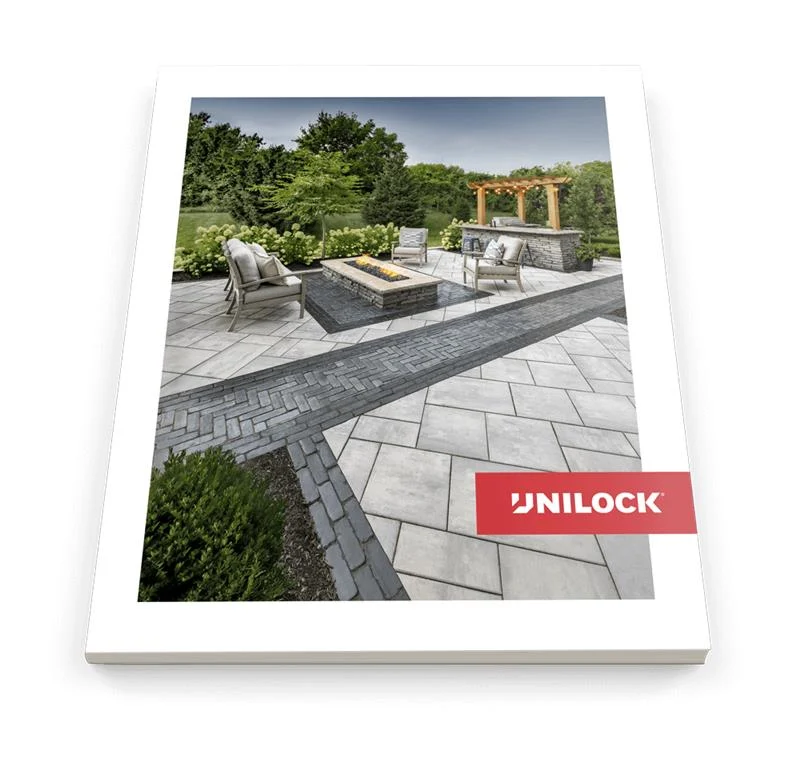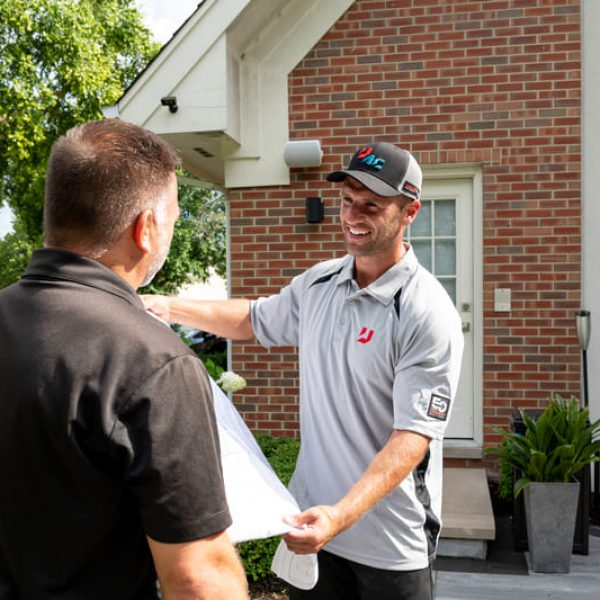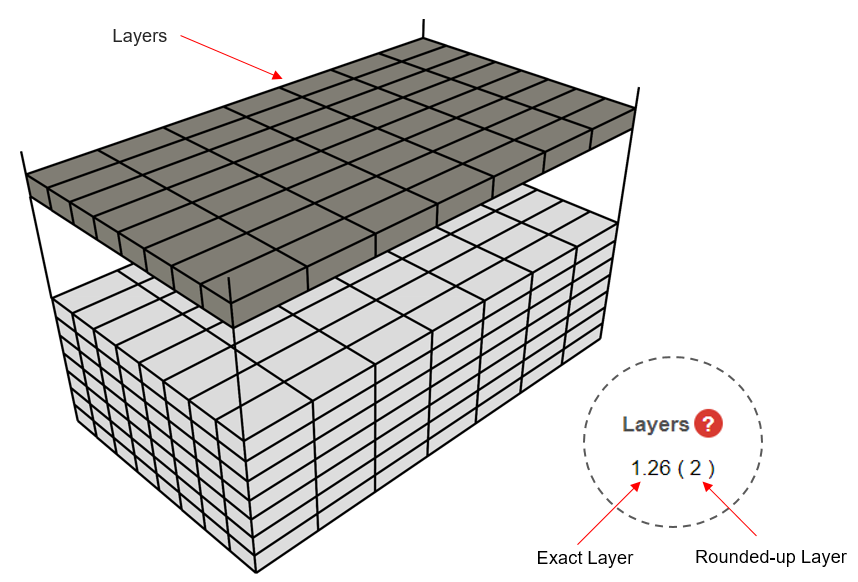Working with a Unilock Authorized Contractor is working with the best of the best. Our UACs possess the knowledge and expertise to bring your dream project to life, and deliver stunning results that will exceed your expectations.
Top Paver Base Materials + How To Install a Patio Paver Base
When it comes to building a patio, driveway, or walkway, the right paver base material plays an important role in the structural integrity of your hardscaping project.
The paver base sets the stage for your pavers, ensuring they are well-supported to endure heavy vehicular traffic and prevent water retention.
In this article, we’ll cover the common materials that make up a paver base, and walk you through the process of installing a paver base for your patio.
Explore high-quality pavers at Unilock
What Is a Paver Base?
A paver base is made up of a gravel base that is spread and compacted on the ground before paver installation.
It acts as a foundation for the pavers to improve drainage and provide stability and support, preventing pavers from sinking or shifting over time.
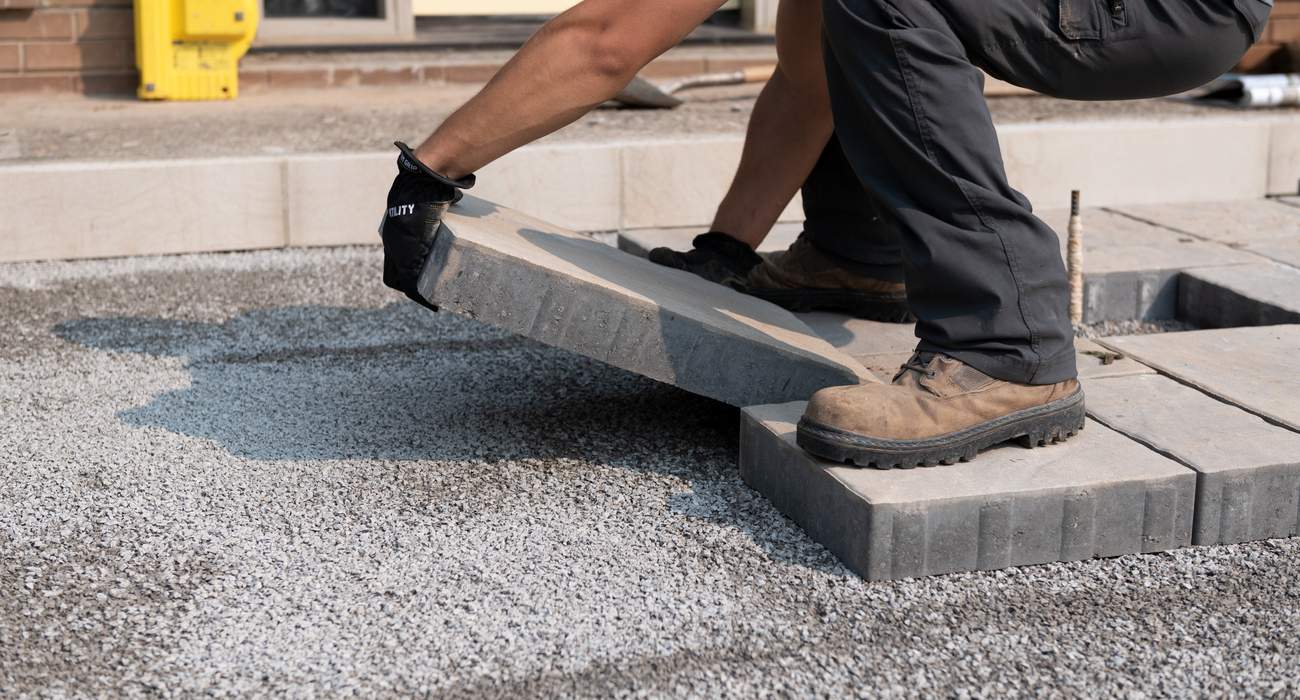
What Is a Paver Base Made Of?
A paver base is comprised of three different layers to create a stable and durable paver support system. These layers work together to provide structural integrity and allow drainage.
Here are the three layers that make up this type of base:
1. Subsoil
The subsoil is the lowest layer and is typically composed of either sandy soil, silty soil, or clay. The thickness of this base can vary depending on the type of subsoil that’s there.
2. Base Layer
The base layer sits directly on top of the subsoil and is usually made of crushed stone or gravel. This layer provides additional support and stability for the pavers.
Different types of base have different drainage abilities, by allowing water to drain from the pavers and bedding layer away from the paved area.
The thickness of the base layer will depend on your paver project. For walkways, your base layer should be 6 to 10 inches. For driveways, it should be 8 to 14 inches.
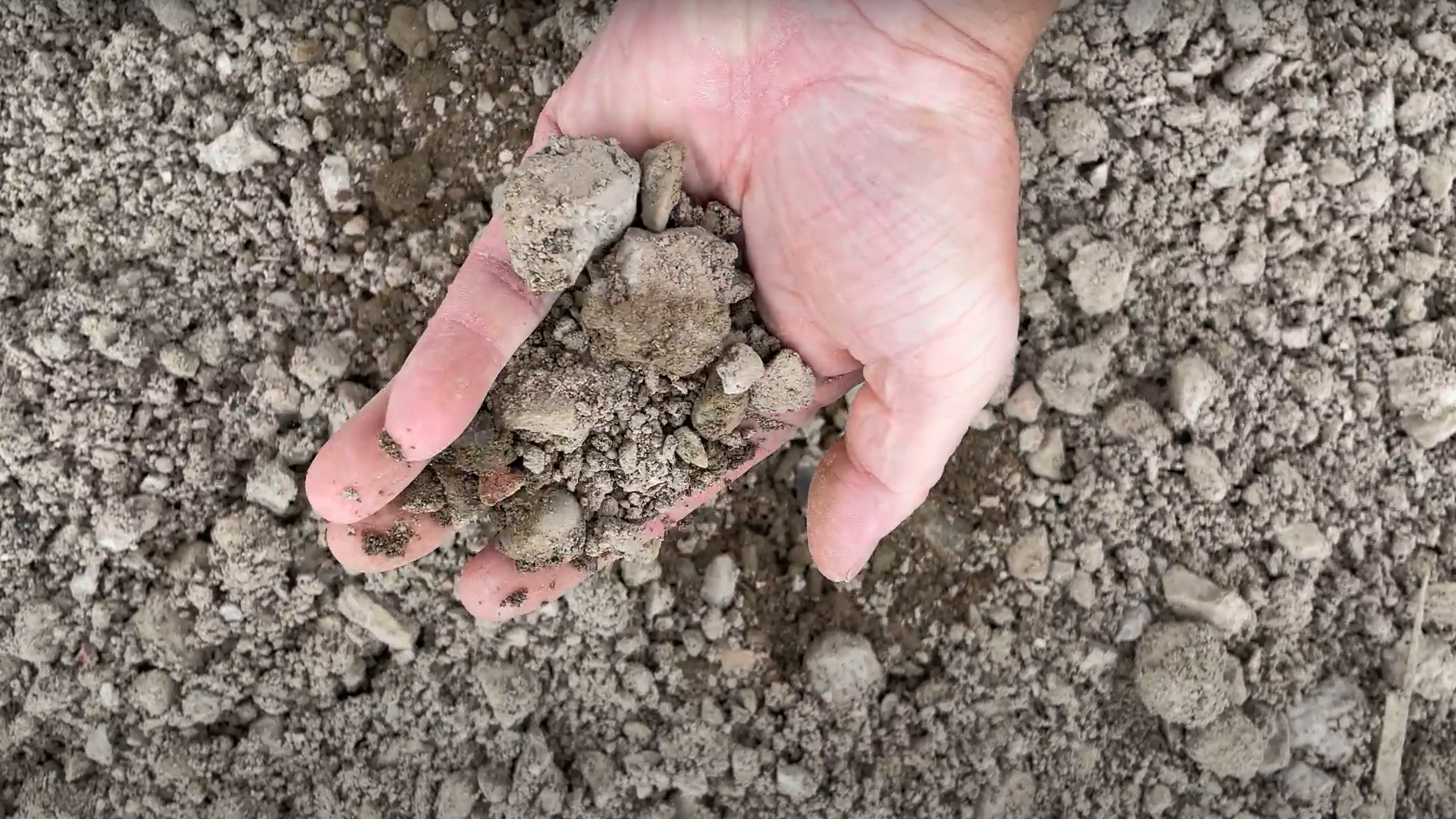
3. Bedding Layer
The bedding layer is the final layer before the pavers are laid. This layer is usually made from coarse sand or small chip stone, referred to as HPB or ASTM No. 9 chip stone.
When screeded correctly, It provides a smooth, even surface for the pavers. The sand fills in any gaps or irregularities in the layers below, creating a level surface for the pavers. The bedding layer is typically 1” thick.
Unilock tip: Based on the measurements you provide, you can use the Unilock paver calculator to get an estimate of the materials and gravel base you’ll need to complete your outdoor living project.
Types of Paver Base Materials
Paver base materials are essential for creating a stable foundation for your paver projects and are typically categorized into two main types: traditional and open-graded.
Here’s a closer look at each type:
1. Traditional Base Material
Traditional base material includes a mix of sand and crushed stone or gravel. This type often contains fines, which help to fill in voids and create a more compact layer. It is ideal for providing stability and support for heavy loads, making it suitable for a variety of paver applications. Traditional base materials are known for their optimal drainage and load-bearing qualities, ensuring your paver installation remains durable over time.
2. Open-Graded Base Material
Open-graded base material consists of larger, uniformly sized aggregate stones without fines. This type promotes excellent drainage and is perfect for projects requiring permeable surfaces. Open-graded bases are particularly effective in preventing water accumulation, making them a popular choice in areas prone to heavy rainfall. This material provides a solid foundation while allowing for proper water flow, reducing the risk of settling or shifting over time.
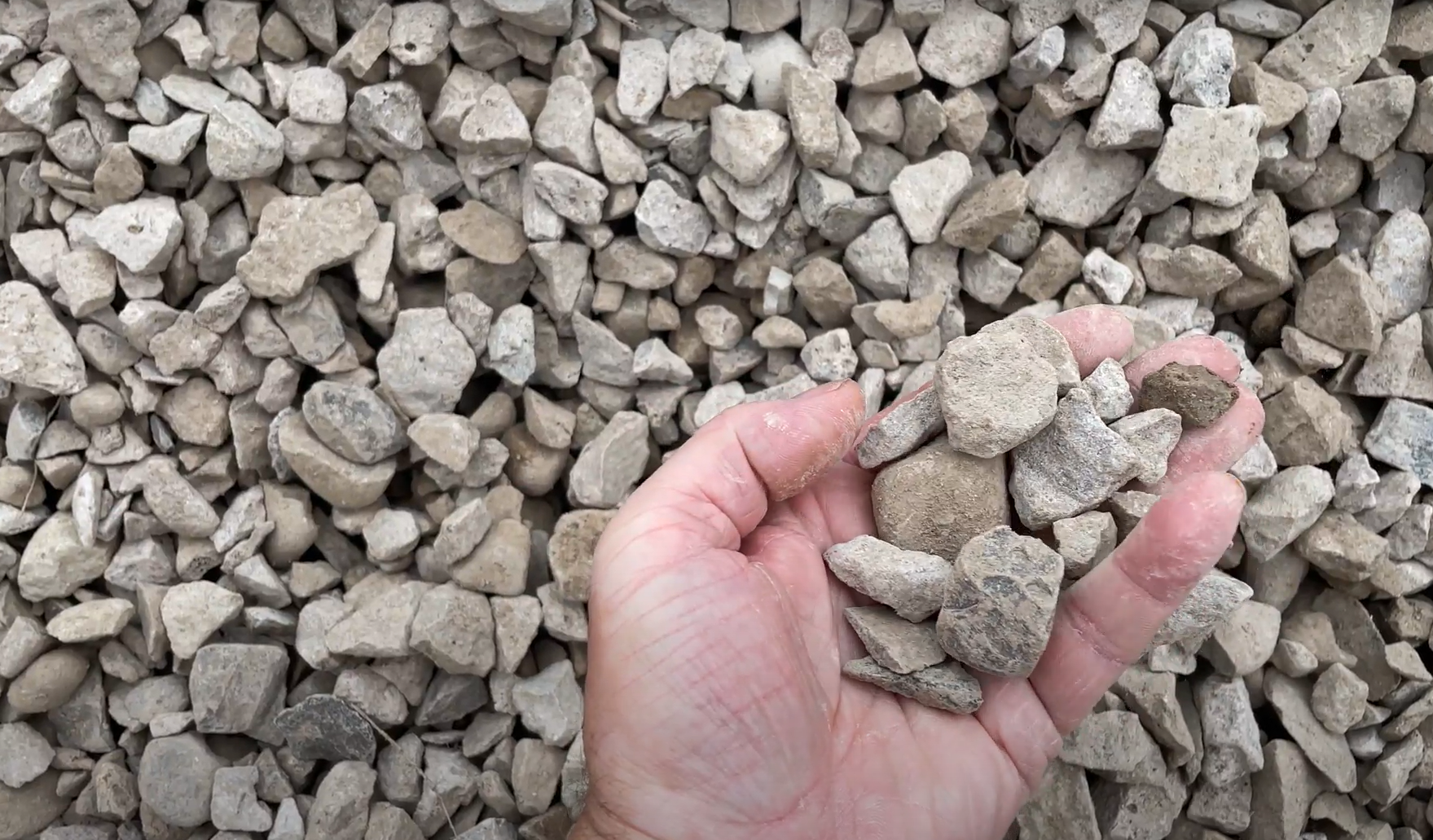
How To Install a Patio Paver Base
Once you have chosen your pavers and marked the area of your hardscaping project, you’ll need to prepare the ground to install the paver base.
1. Excavate the Area
Start by digging an area deep enough to lay your base material. For walkways that will bear foot traffic, you will typically need a base of 6” to 10”.
However, for driveways that may endure foot traffic, vehicular traffic, and potential load-bearing capacities, you may need to dig as deep as 14”, depending on the conditions of the subsoil.
Generally, the more sandy the subsoil, the less base material is required, while on the other hand, more clayish subsoil will require additional base material. (See chart below)
|
PATIOS AND WALKWAYS |
DRIVEWAYS |
|||||
|
SUBSOIL TYPE |
Sandy | Silty | Clay | Sandy | Silty | Clay |
|
Gravel |
6” | 8” | 10” | 8” | 12” | 14” |
|
Bedding |
1” | 1” | 1” | 1” | 1” | 1” |
| Paver | 3” | 3” | 3” | 3” | 3” |
3” |
| TOTAL EXCAVATION | 10” | 12” | 14” | 12” | 16” |
18” |
|
+ any loose subsoil |
||||||
2. Choose the Base Materials
There are two types of gravel typically used for paving stone installation. The first is clear stone gravel comprised of ¾” pieces of stone with no additional sands or fines in the gravel, often referred to as a permeable base, which can be used in traditional or permeable paver applications. The second is a ¾ inch stone and sand mix, sometimes called three-quarter minus, or road build gravel. This type is very good but does require additional compaction as it’s not as free-draining as the open-graded ¾-inch clear stone. When selecting base materials, they should ensure proper drainage and be sturdy enough to support the pavers when compacted.
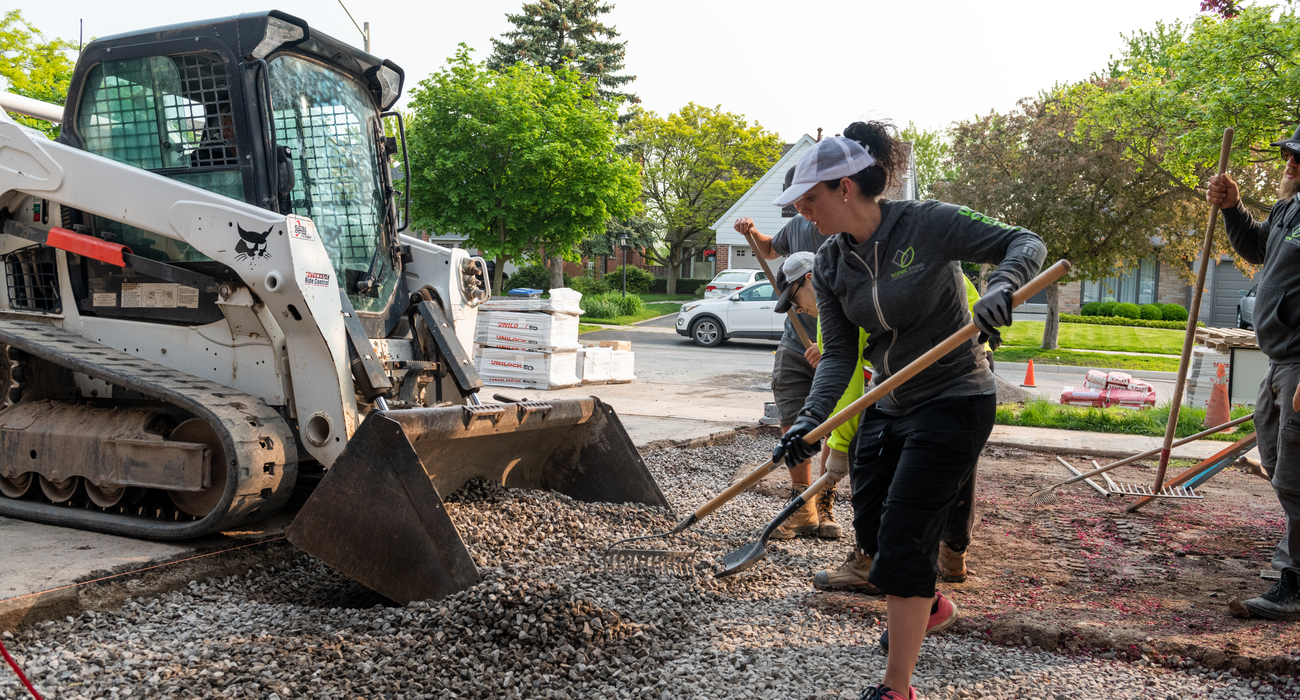
3. Add the Gravel Base and Bedding Course
When placing the gravel, make sure to spread the gravel in 3” thick layers followed by compaction. Repeat this process until you have achieved the full amount of base required for your project. Once your gravel base is ready, add the 1” thick bedding layer, which consists of fine chip stone called ⅛” clear chip stone, or HPB. Spread this layer evenly over the surface using a combination of 1” diameter steel pipes as guides, and a straight board to draw the material flat. This will ensure a flat and properly sloped bed upon which to lay your pavers.
Once your bedding course is laid, you can begin installing your pavers.
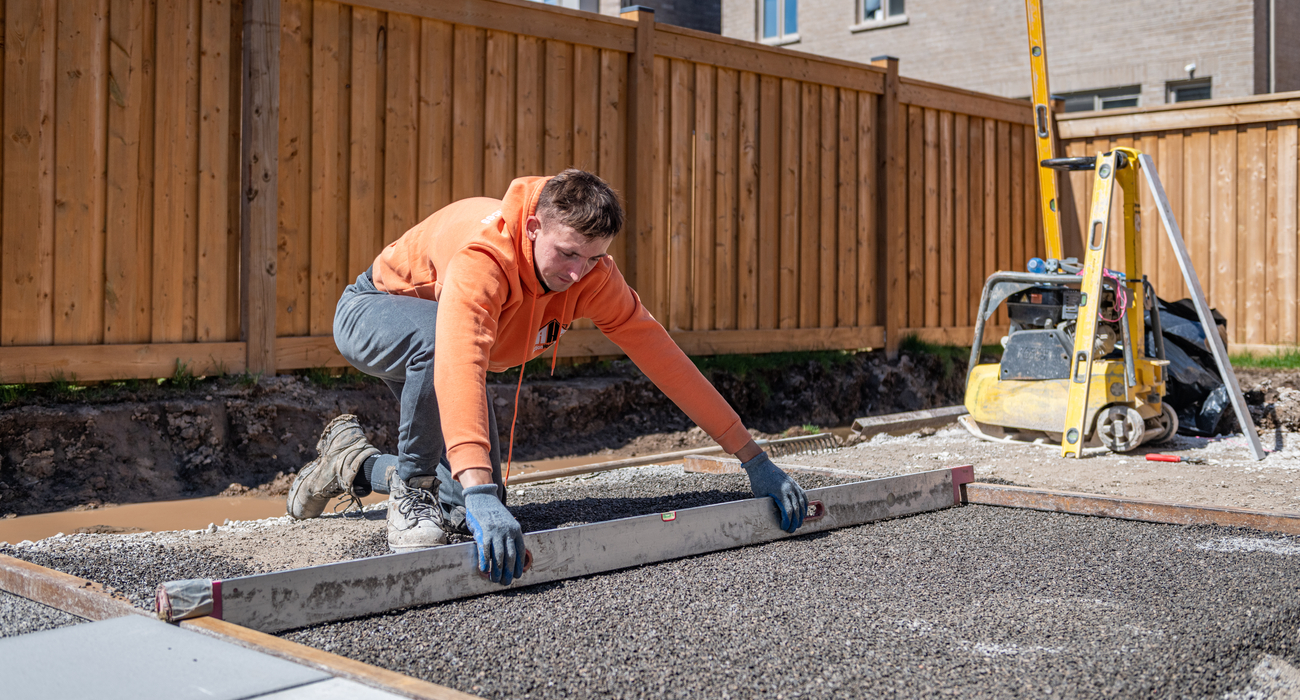
FAQs About Paver Base Installation
1. Why do I need a paver base?
A paver base provides stability and support for the pavers, preventing them from sinking or becoming uneven. It also allows for proper drainage, ensuring that water does not accumulate beneath the pavers, which can lead to frost heave in colder climates.
The paver base helps distribute the load of heavy weights or vehicles, reducing the risk of rutting or damage to the pavers.
2. Should the paver base be compacted?
Yes. The paver base should be evenly compacted, as it creates a stable, durable surface for which to lay your pavers. You can use a vibratory plate compactor or hand tamper to compact your base.
3. Can I use dirt as my paver base?
No. Laying patio pavers on dirt does not provide the necessary stability and drainage characteristics that other base materials (like gravel) offer.
4. Can I install a paver base myself or should I hire a professional?
Installing a paver base can be a DIY project if you have the right tools, equipment, protective wear, and knowledge.
However, installing this type of base can be labor-intensive and requires precise execution to ensure proper installation. If you’re not sure about the process or have a large-scale project, consider hiring a Unilock Authorized Contractor to get the best results.
These skilled hardscape professionals can help you transform your dream outdoor space into a reality.
Get professional help for your project. Find a Unilock Authorized Contractor
Related
Articles

We’re Here
To Help
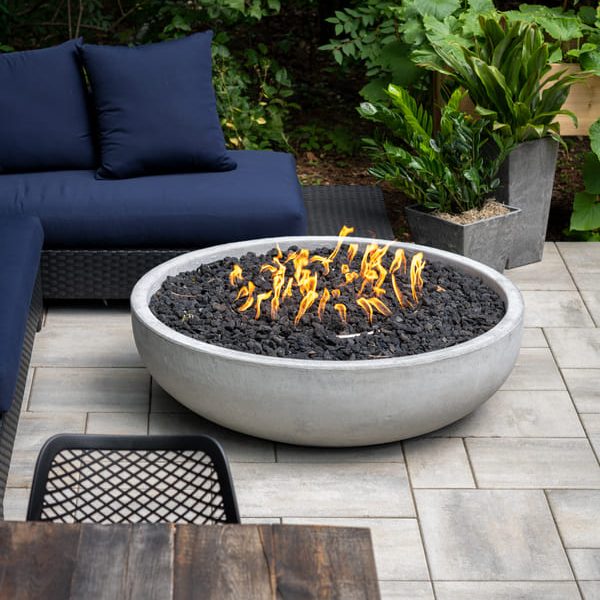
Browse our Design Idea Catalog
Explore endless design possibilities through our Design Idea Catalog. Browse our extensive portfolio of paver and wall products, and get inspired by our outstanding design projects that will fuel your creative expression.

Visit an Outdoor Idea Center
Experience the beauty and quality of Unilock paver and wall products in a life-sized setting by visiting a local Outdoor Idea Center. Our knowledgeable and friendly staff are on hand to answer any questions and offer free product samples.
